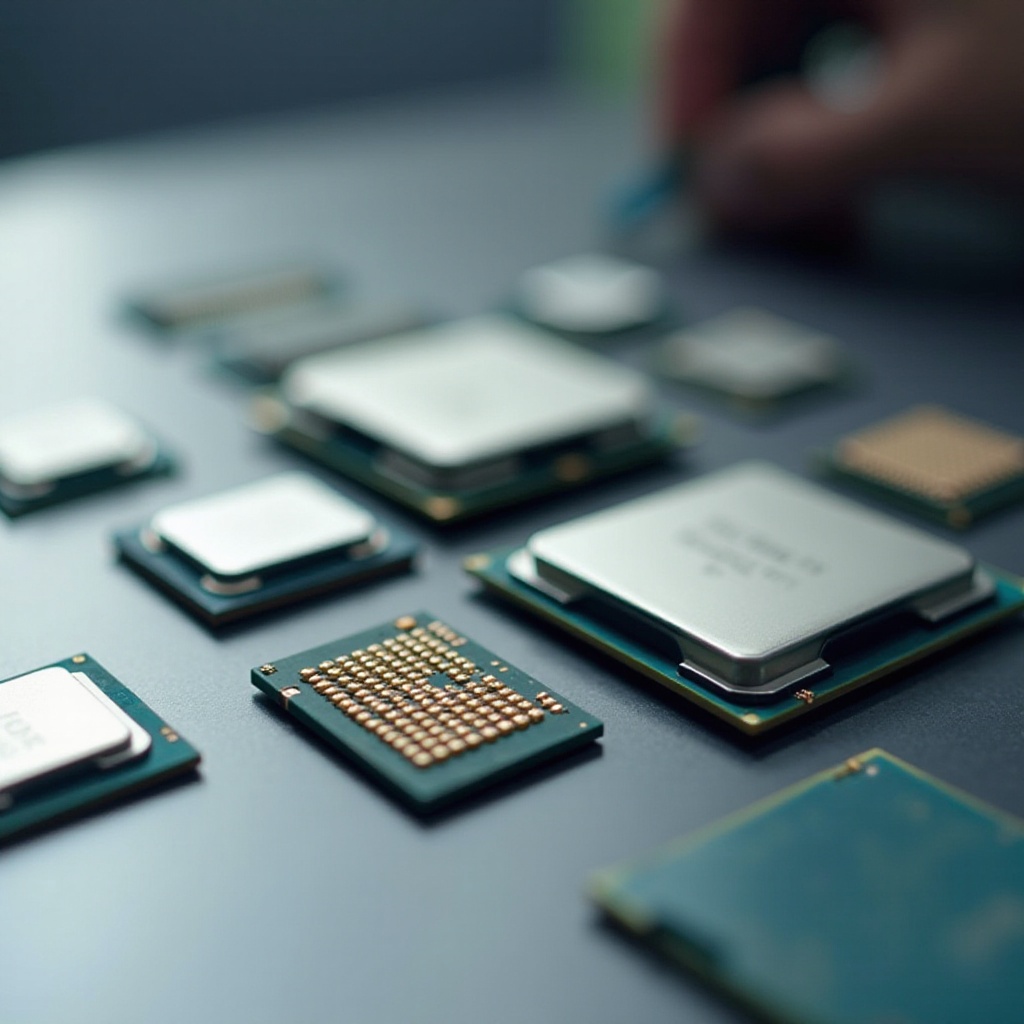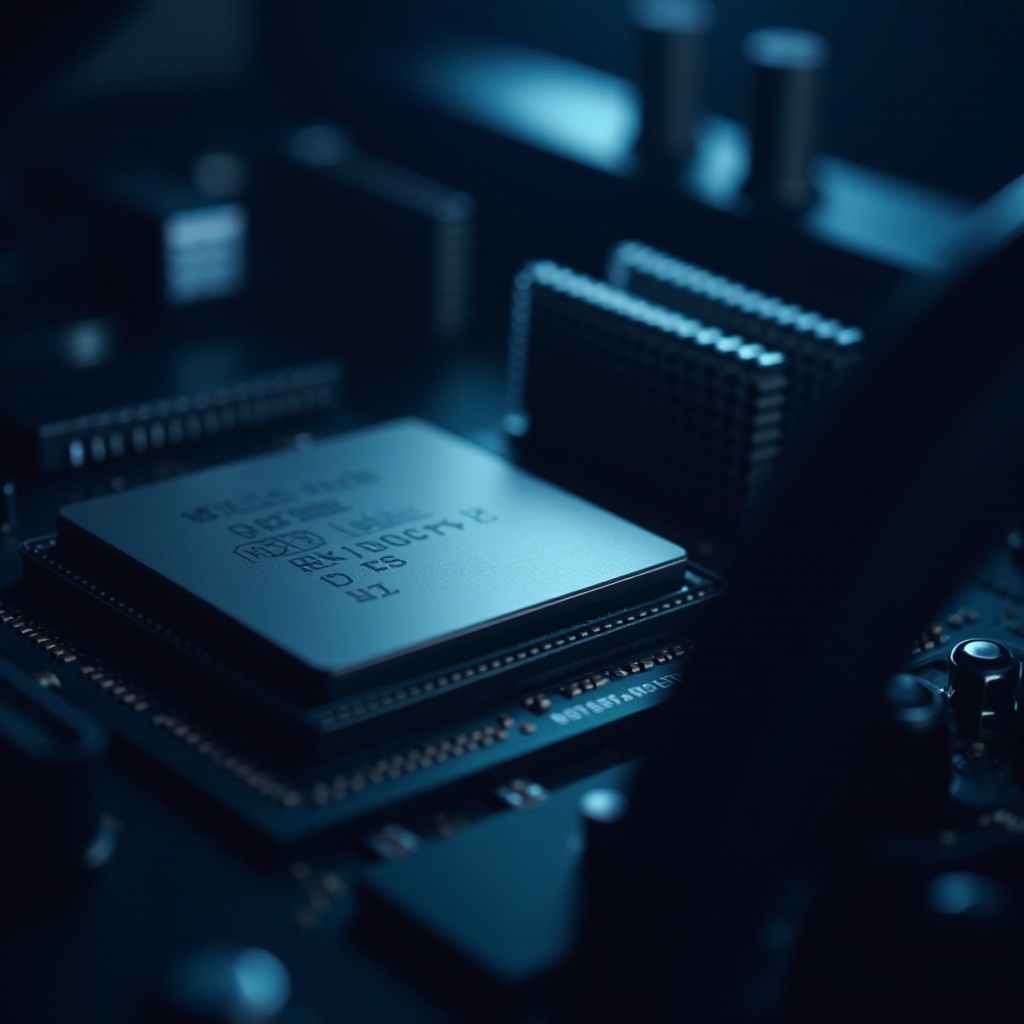How to Compare Computer Processors
Introduction
Choosing the right computer processor can be overwhelming given the numerous options on the market. Whether you are building a new PC or upgrading an existing one, understanding how to compare processors is crucial. This guide will walk you through the key specifications, help you interpret benchmark scores, and consider use-cases to ensure you make an informed decision.

Understanding Processor Specifications
To compare computer processors effectively, it's essential to understand their key specifications. This section will guide you through the three most critical aspects: clock speed, core count, and threads.
Clock Speed
Clock speed, measured in gigahertz (GHz), indicates how many cycles a CPU can perform per second. Higher clock speeds generally mean faster processing, but they are not the sole indicator of performance. Efficient architecture and other features can also enhance a CPU's capabilities.
Core Count
Cores are the individual processing units within a CPU. More cores allow a processor to handle multiple tasks simultaneously, which is beneficial for multitasking and demanding applications. This is particularly important for users who run several intensive applications simultaneously.
Threads and Hyper-Threading
Threads are virtual cores created by splitting physical cores, allowing for more parallel processes. Hyper-Threading is Intel’s technology to improve performance by enabling each core to handle two threads simultaneously. AMD has a similar technology known as Simultaneous Multithreading (SMT).
Understanding these specifications will help you better compare and choose the right CPU for your needs.
Types of Computer Processors
There are several major brands and types of processors available, each with its own strengths and target users. Comparing these can help you zero in on the best options for your needs and budget.
Intel CPUs
Intel is known for its high-performance CPUs and has a range of processors for various needs, from the budget-friendly i3 series to the powerful i9 models. They perform well in productivity and single-threaded tasks, making them a favorite among many users.
AMD CPUs
AMD processors often offer better multi-threading performance at a lower price point compared to Intel. The Ryzen series has become popular due to its competitive pricing and strong multi-core performance, making them ideal for gaming and content creation.
Other Brands
While Intel and AMD dominate the market, other brands like ARM and Qualcomm also offer processors, particularly in mobile devices and lower-power applications. These might not be suitable for standard desktop computers but are worth mentioning for specific use cases.
Knowing the different brands and their unique strengths can help you narrow down your options based on performance and budget.

Benchmarking Processors
Benchmarking is a critical step to objectively evaluate processor performance. Both synthetic and real-world benchmarks can provide a thorough look into a CPU's capabilities.
Synthetic Benchmarks
Synthetic benchmarks simulate different scenarios to measure CPU performance in a controlled environment. Tools like Cinebench and Geekbench offer standardized tests to compare processors on equal footing. These are useful for getting a quick overview of a processor's strengths and weaknesses.
Real-World Benchmarks
Real-world benchmarks assess performance in actual applications or games. This type of benchmarking provides insights into how a CPU performs in day-to-day tasks. They offer a more practical assessment of how a processor will handle the programs and activities you use most frequently.
How to Interpret Scores
When reviewing benchmark scores, higher numbers usually indicate better performance. However, it’s important to consider the specific aspects tested and if they align with your use case. A high score in a gaming benchmark may not translate to better performance in video editing tasks, for example.
By examining both synthetic and real-world benchmarks, you get a comprehensive understanding of a processor’s capabilities and how it might perform in your specific tasks.
Special Considerations Based on Use-Case
Different use-cases demand different capabilities from a processor. Understanding these specific needs can greatly aid in choosing the right CPU.
Gaming
For gaming, a high clock speed and strong single-core performance are essential. Many modern games are optimized for fewer cores but higher speeds, making CPUs like the Intel i7 or AMD Ryzen 5 ideal for gaming. Ensure that the CPU you choose aligns with the GPU to avoid bottlenecks.
Video Editing and Content Creation
These tasks benefit from high core counts and multi-threading. AMD’s Ryzen 7 or 9 series are excellent choices for content creation due to their impressive multi-core performance and affordability. Having more cores and threads can significantly reduce rendering times and improve multitasking.
Everyday Use
For general use such as browsing, office applications, and media consumption, a mid-range processor like Intel i5 or AMD Ryzen 5 offers a perfect balance of performance and price without overkill. These processors are more than capable of handling typical tasks efficiently.
Understanding your specific needs ensures you choose a processor that delivers optimal performance for your primary tasks.
Price-to-Performance Ratio
Balancing cost and performance is crucial when choosing a processor. Look for CPUs that offer the best performance within your budget. AMD’s offerings often provide a better price-to-performance ratio compared to Intel, making them an attractive option for budget-conscious buyers. Evaluate if the price justifies the performance improvements for your intended use.
Energy Efficiency and Thermal Performance
Energy efficiency and thermal performance are important considerations, especially for systems that run continuously or in compact spaces. Processors with lower Thermal Design Power (TDP) consume less energy and produce less heat, leading to quieter and cooler systems. Both Intel and AMD offer energy-efficient models. However, ensure your cooling solution matches your processor’s thermal output to maintain optimal performance and longevity.

Conclusion
Choosing the right processor involves understanding specifications, comparing benchmarks, and considering your specific needs. Whether you require high performance for gaming, content creation, or everyday use, this guide provides the tools to make an informed decision. Remember to also consider cost, energy efficiency, and thermal management for a well-rounded choice.
Frequently Asked Questions
What are the most important specs to look for in a CPU?
Clock speed, core count, and threading capabilities are crucial specifications. These factors determine the CPU’s ability to handle different tasks efficiently.
How do I know if a CPU is good for gaming?
For gaming, focus on high clock speed and good single-core performance. Real-world gaming benchmarks can also provide insight into a CPU’s gaming capabilities.
Are Intel processors better than AMD for productivity tasks?
AMD processors often offer better multi-threading performance, making them more suitable for productivity tasks like video editing and rendering. However, Intel CPUs might excel in specific applications and single-threaded tasks. Comparing benchmarks for your specific applications can provide a clearer answer.



